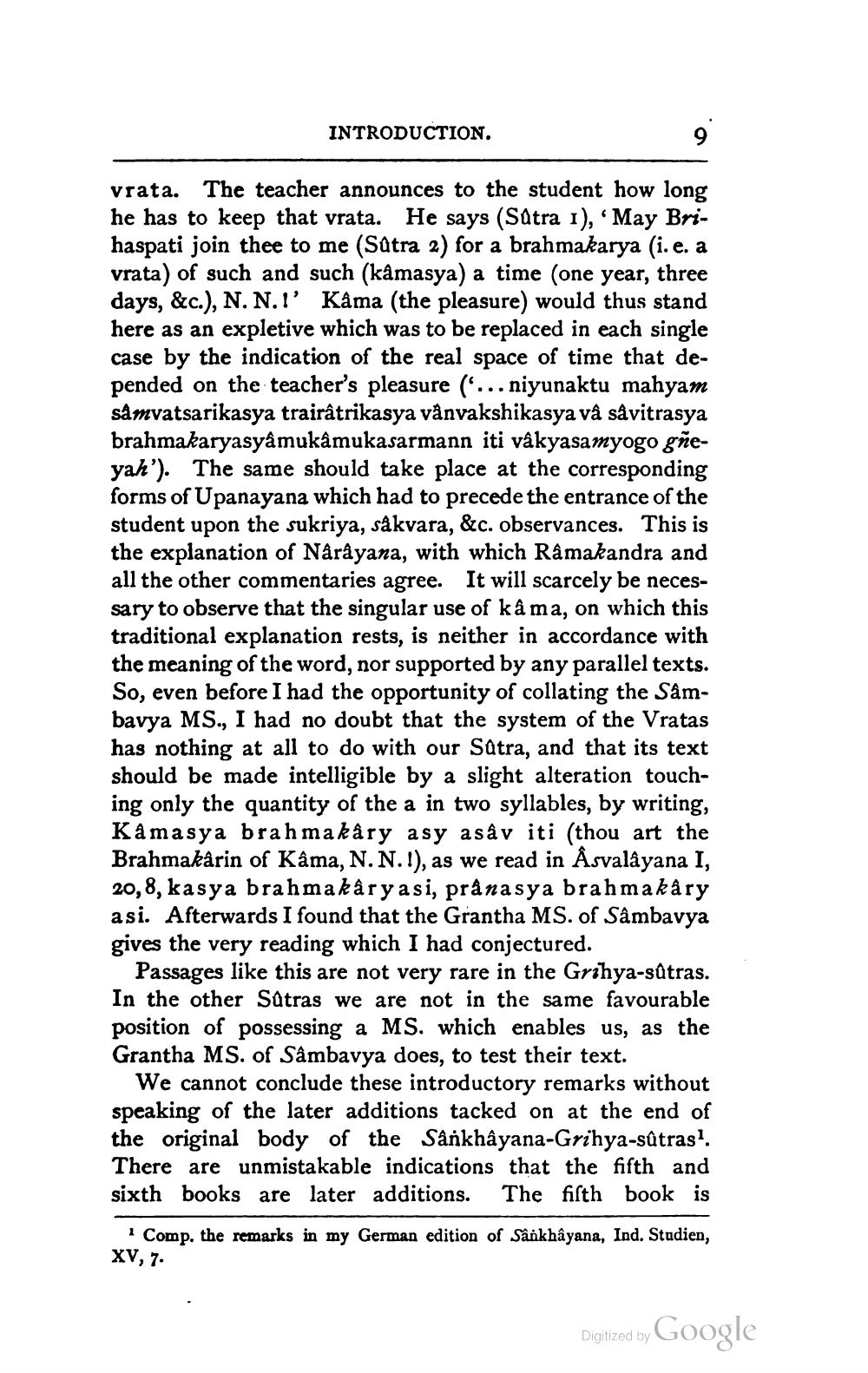________________
INTRODUCTION.
vrata.
The teacher announces to the student how long he has to keep that vrata. He says (Sutra 1), 'May Brihaspati join thee to me (Sûtra 2) for a brahmakarya (i. e. a vrata) of such and such (kâmasya) a time (one year, three days, &c.), N. N.!' Kâma (the pleasure) would thus stand here as an expletive which was to be replaced in each single case by the indication of the real space of time that depended on the teacher's pleasure (... niyunaktu mahyam samvatsarikasya trairâtrikasya vänvakshikasya vâ sâvitrasya brahmakaryasyâmukâmukasarmann iti vâkyasamyogo gneyah'). The same should take place at the corresponding forms of Upanayana which had to precede the entrance of the student upon the sukriya, såkvara, &c. observances. This is the explanation of Nârâyana, with which Râmakandra and all the other commentaries agree. It will scarcely be necessary to observe that the singular use of kâ ma, on which this traditional explanation rests, is neither in accordance with the meaning of the word, nor supported by any parallel texts. So, even before I had the opportunity of collating the Sâmbavya MS., I had no doubt that the system of the Vratas has nothing at all to do with our Sûtra, and that its text should be made intelligible by a slight alteration touching only the quantity of the a in two syllables, by writing, Kâmasya brahmakâry asy asâv iti (thou art the Brahmakârin of Kâma, N. N. !), as we read in Âsvalâyana I, 20,8, kasya brahmakaryasi, prânasya brahmakâry asi. Afterwards I found that the Grantha MS. of Sâmbavya gives the very reading which I had conjectured.
Passages like this are not very rare in the Grihya-sûtras. In the other Sûtras we are not in the same favourable position of possessing a MS. which enables us, as the Grantha MS. of Sâmbavya does, to test their text.
We cannot conclude these introductory remarks without speaking of the later additions tacked on at the end of the original body of the Sânkhâyana-Grihya-sûtras1. There are unmistakable indications that the fifth and sixth books are later additions. The fifth book is
1 Comp. the remarks in my German edition of Sankhâyana, Ind. Studien, XV, 7.
Digitized by Google




